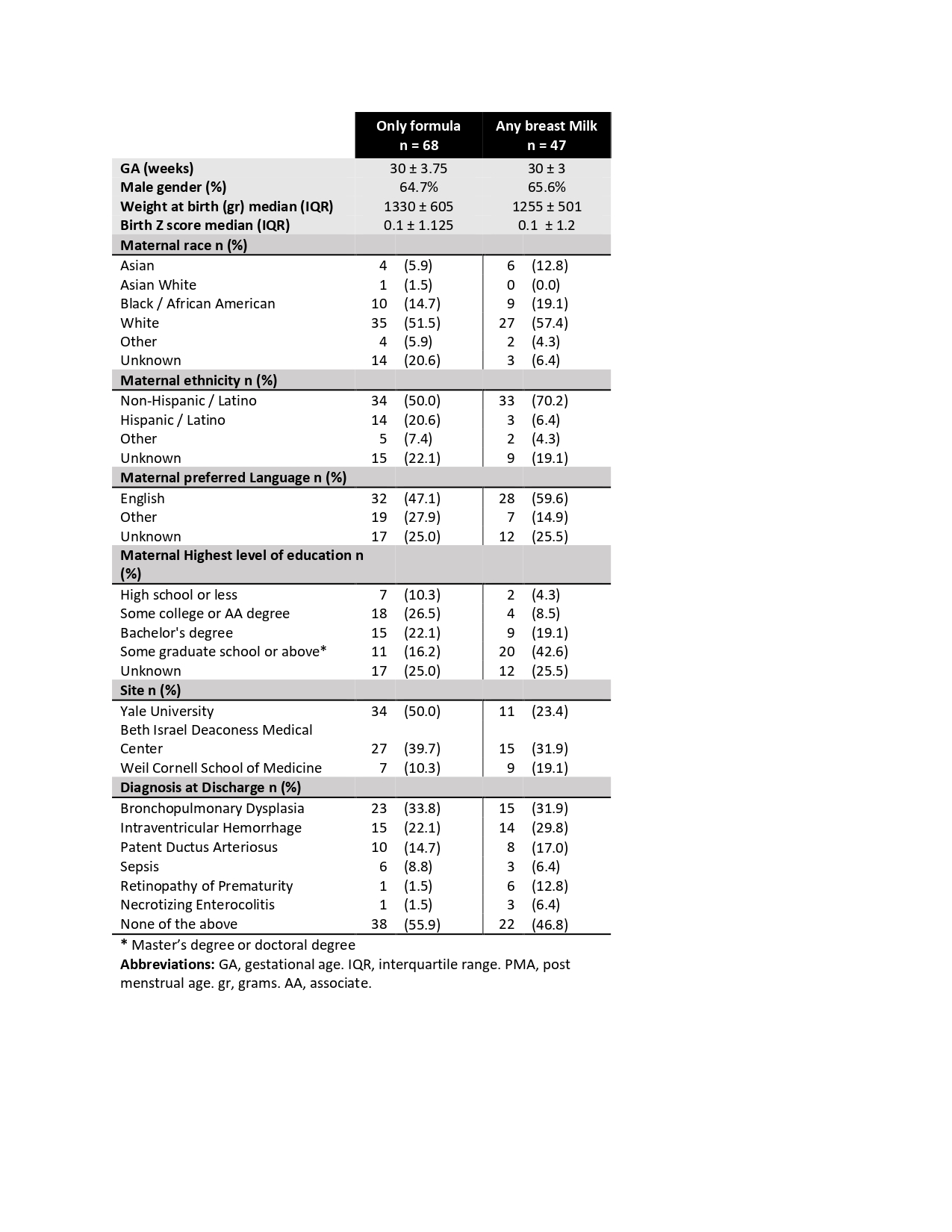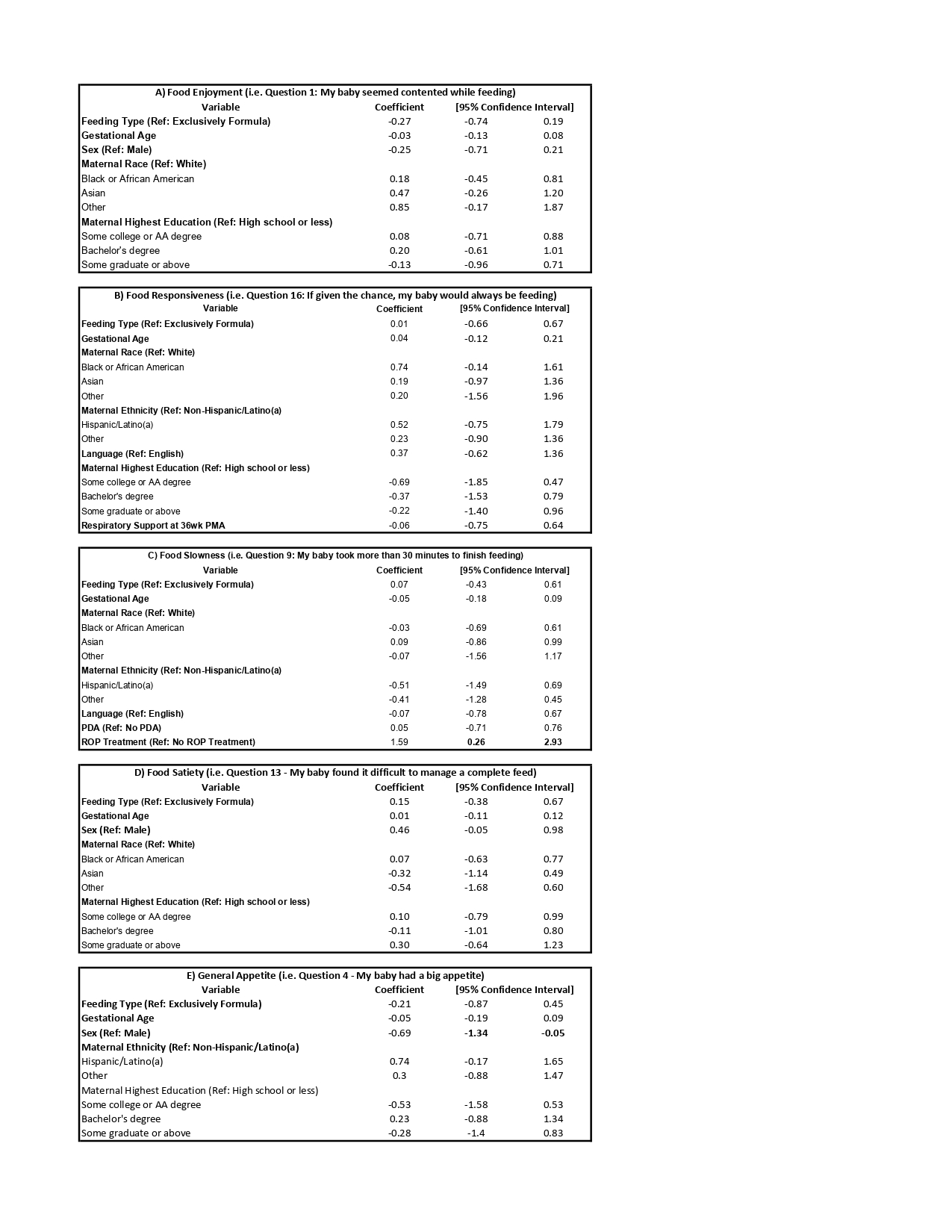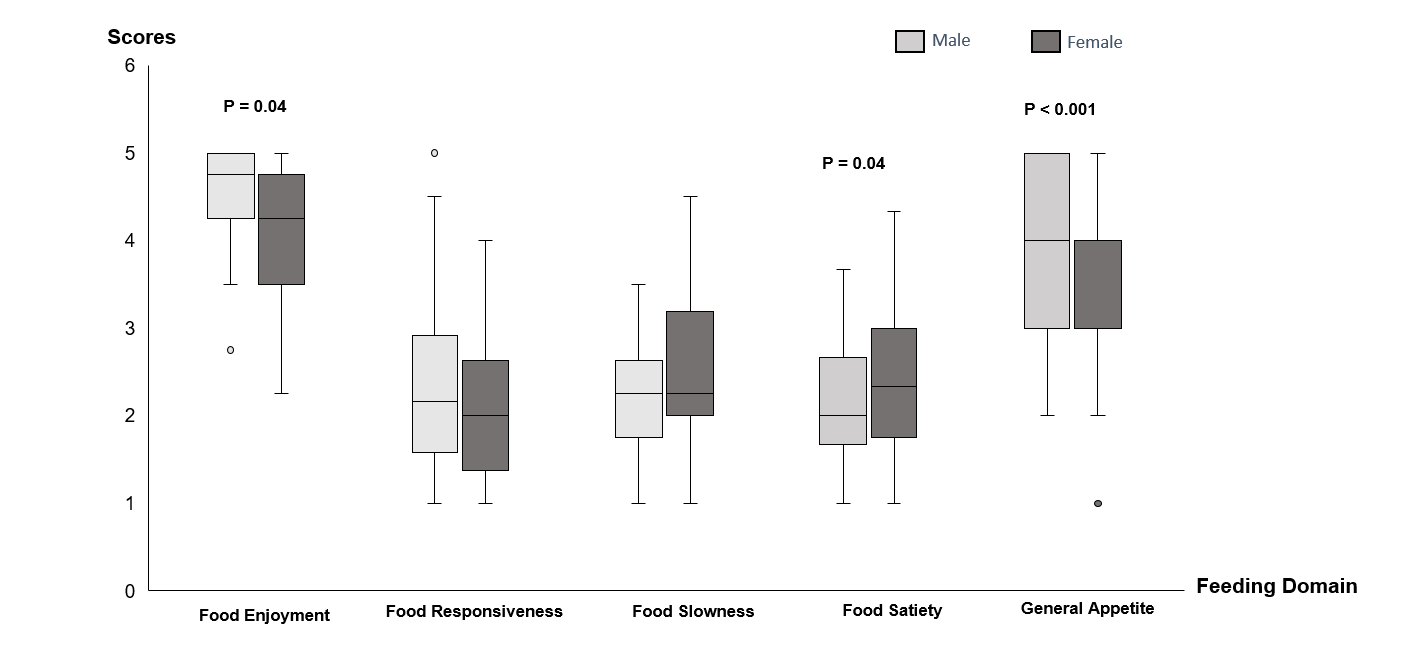Neonatal Fetal Nutrition & Metabolism 4
Session: Neonatal Fetal Nutrition & Metabolism 4
651 - Gestational Age, Feeding Type, and Infant Feeding Behaviors in Very and Extremely Preterm Infants
Monday, April 28, 2025
7:00am - 9:15am HST
Publication Number: 651.4836
Maria Laura Dona Mourao, Beth Israel Deaconess Medical Center, Boston, MA, United States; Marianna Castellanos, The Children's Hospital at Montefiore, Bronx, NY, United States; Rhys Johnstone, Beth Israel Deaconess Medical Center, Boston, MA, United States; Sofia Gnecco, Beth Israel Deaconess Medical Center, Boston, MA, United States; Kim Ruiz-Arellanos, Beth Israel Deaconess Medical Center, Inc., cambridge, MA, United States; Sarah Taylor, Yale School of Medicine, New Haven, CT, United States; Camilia R. Martin, Weill Cornell Medicine, New York, NY, United States; Kristin Leone. Santoro, Harvard Medical School/Beth Israel Deaconess Medical Center, Boston, MA, United States

Maria Laura Dona Mourao, MD
Post Doc Research Fellow
Beth Israel Deaconess Medical Center
Boston, Massachusetts, United States
Presenting Author(s)
Background: Very and extremely preterm infants face difficulty establishing normal oral feeding patterns with a higher prevalence of poor feeding skills, refusal to eat, mechanical difficulties, and delayed development. Identifying risk factors for feeding difficulties could provide opportunities for earlier intervention.
Objective: To determine how clinical and sociodemographic exposures relate to parental-reported feeding behaviors of very and extremely preterm infants at four months corrected age (CA) with a focus on gestational age at birth and breast milk feeding.
Design/Methods: Parental responses to the Baby Feeding Behavior Questionnaire (BEBQ) and infant feeding type (any breast milk or exclusively formula) were collected from the 4-month CA study visits of preterm infants ( < 32 weeks) in the Patterns of Growth Outcomes (POGO) cohort. Demographic, clinical, and social data through 4 months was collected. Mean feeding behavior scores from the BEBQ were assessed across five domains: enjoyment of food, food responsiveness, slowness in eating, satiety responsiveness, and general appetite. Univariate and adjusted regression analyses examined associations between feeding type, gestational age, and feeding behaviors. T-tests and ANOVA were used for normally distributed data, while Kruskal-Wallis and Mann-Whitney tests for non-parametric data. Infant and maternal characteristics with p < 0.1 were included in the adjusted regression. A Bonferroni correction was performed to adjust for multiple comparisons.
Results: 115 infants were included in the analysis, with 59% exclusively formula-fed (Table 1). Formula-fed infants exhibited lower slowness scores which represent faster feeding behaviors (p-value=0.01). After adjusting for potential confounders, neither feeding type nor birth gestational age related to feeding behavior in all five domains (Table 2). In the univariate analysis, sex was associated with most feeding domains (Figure 1). Female infants had a lower mean general appetite score compared to male counterparts. (Table 2). Infants who required treatment for retinopathy of prematurity (ROP) had significantly higher feeding slowness scores, indicating slower feeding compared to infants who did not receive ROP treatment (Table 2).
Conclusion(s): In this study of infants born 23 to 31 weeks, birth gestational age did not relate to feeding patterns at 4 months CA. Differences in feeding were observed by sex, and diagnosis at discharge. Future investigations might consider how these feeding behaviors relate to growth and developmental outcomes.
Table 1: Sociodemographic and Clinical Characteristics of the POGO Cohort Completing the BEBQ Survey at the 3-5 Month Corrected Age Visit

Table 2: Adjusted Linear Regression for Each BEBQ Domain

Figure 1: Univariate Analysis of feeding domains by sex
 Figure 1: Males scored higher in both food enjoyment and general appetite, whereas females had higher scores in satiety.
Figure 1: Males scored higher in both food enjoyment and general appetite, whereas females had higher scores in satiety.
